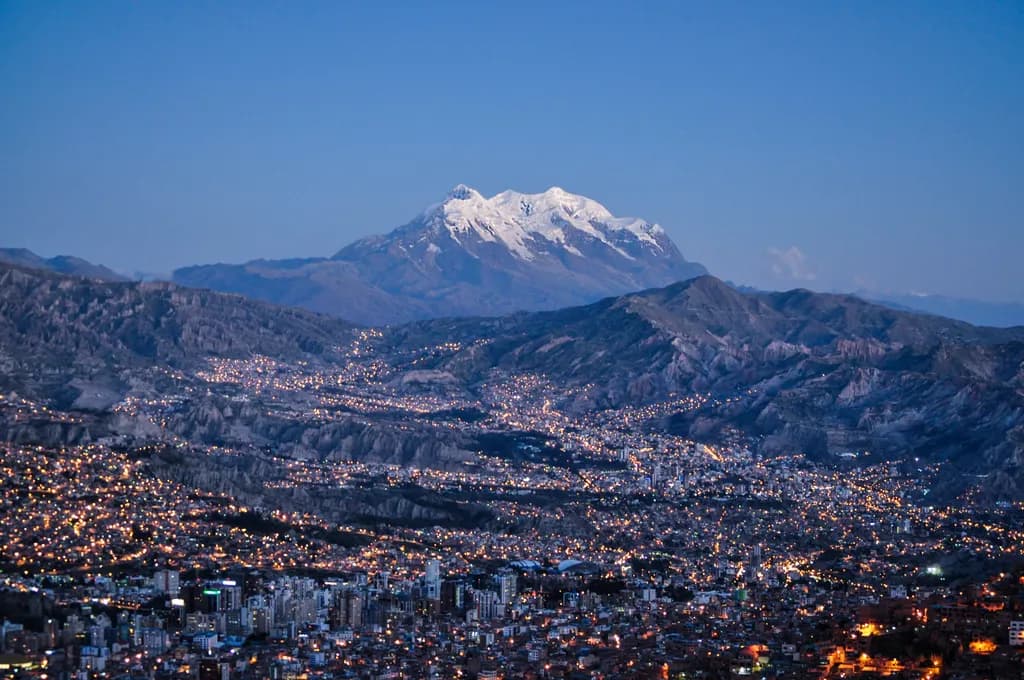Nassau, Bahamas: Your Ultimate Travel Guide
Discover the best times to visit Nassau, Bahamas, top attractions, culture, budget tips, and more. Plan your perfect island getaway!
Read More →Discover the best time to visit La Paz, Bolivia, exploring its stunning landscapes, vibrant culture, and thrilling adventures. From navigating its unique geography to savoring delicious local cuisine, this guide offers practical tips and insider knowledge for an unforgettable trip. Learn about the weather, budget, transportation, and more!

Noise reduction

Get detailed weather data, best times to visit, and local insights on our comprehensive destination guide.
View La Paz, Bolivia Guide →🌟 Planning your next adventure?
Find the best deals on flights, hotels, and travel packages at Trip.com.
La Paz, Bolivia, a city clinging dramatically to the Andes Mountains, offers a unique and unforgettable travel experience. Its breathtaking landscapes, rich culture, and vibrant energy captivate visitors from around the world. But knowing when to visit is crucial for maximizing your experience. This comprehensive guide covers everything you need to plan your perfect La Paz adventure.
La Paz enjoys a relatively mild climate, but the best time to visit is during the dry season, from April to October. The weather is sunny, with less rain and lower humidity, making it ideal for exploring the city and surrounding areas. However, be aware that this is also peak tourist season, so expect higher prices and more crowds.
The wet season (November to March) brings significant rainfall, sometimes even heavy downpours. While this creates lush greenery, it can also disrupt travel plans and outdoor activities. If you're planning on hiking or exploring the valleys, the dry season is highly recommended. Cusco, another Andean city, also experiences a similar dry/wet season pattern.
La Paz is a melting pot of cultures, with a blend of indigenous Aymara and Quechua traditions alongside Spanish influences. Respectful interactions are essential. It's considered polite to greet people with a 'Buenos días/tardes/noches' and to learn a few basic Spanish phrases. Bartering is common in markets, but always do so politely.
La Paz offers a range of accommodation options, from budget-friendly hostels to luxurious hotels. Expect to spend anywhere from $15 to $100+ per night. Food costs are relatively low, with meals at local restaurants costing around $5-15. Transportation is affordable, utilizing the efficient Teleférico system or taxis.
The Teleférico is the most efficient and scenic way to get around. Taxis are readily available and relatively inexpensive. Consider using ride-sharing apps for added safety. Buses are also an option, but can be crowded.
Consider staying in the Sopocachi or Zona Sur neighborhoods for easy access to attractions and a safe environment. Look into booking your accommodation in advance, especially during peak season.
Indulge in the delicious Bolivian cuisine! Try traditional dishes like salteñas (savory pastries), picantes (spicy stews), and humitas (corn cakes). Many restaurants offer vegetarian and vegan options.
Exercise normal safety precautions, particularly at night. Be aware of your surroundings and avoid displaying expensive jewelry or electronics. Learn basic Spanish phrases to enhance your interactions with locals. For a similar experience, but in a different country, consider Medellin in Colombia. It's also a city of high altitude and vibrant culture.
Planning your trip to La Paz requires careful consideration. However, armed with this guide, you're well-equipped for an incredible journey filled with breathtaking views, cultural experiences, and thrilling adventures. Remember to book your accommodation and flights in advance, especially during peak season.
Planning your la paz bolivia adventure? Enhance it with a customizable private tour guide via GoWithGuide—perfect for exploring beyond the city.
💡 Travel Tip: To make planning simple, you can search flights, hotels, and packages all in one place on Trip.com.
Discover the best times to visit Nassau, Bahamas, top attractions, culture, budget tips, and more. Plan your perfect island getaway!
Read More →Discover the best time to visit Machu Picchu, Peru, along with essential tips for exploring this wonder. Plan your unforgettable Inca adventure!
Read More →Plan your dream trip to LA! Discover the best times to visit, top attractions, hidden gems, and budget tips for your Los Angeles adventure.
Read More →